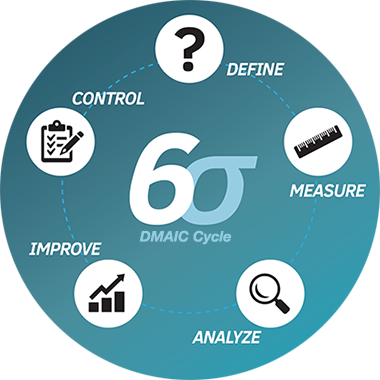Six Sigma was first introduced in 1986 by an engineer at Motorola named Bill Smith. Six Sigma is a methodology that focuses on measuring quality and aiming for perfection. The techniques and tools used for process improvement and eliminating defects are the core of Six Sigma. While the methodology began in the manufacturing industry, today the Six Sigma techniques are used in virtually every type of industry.
Note - no one is saying that we should treat students like products. The intent of using some of these systems in education is to streamline processes and remove errors and issues.
There are three primary elements in Six Sigma:
- Process Improvement – Process improvement is used to eliminate root causes of deficiencies in the organization.
- Process Design (or re-design) – Creating entirely new processes or re-designing existing processes that do not work properly and are beyond the scope of simple process improvement.
- Process Management – This element consists of tasks such as defining processes, measuring performance, analyzing data, and more.
These could be used in schools for all processes and procedures including:
- opening of schools
- discipline issues
- tracking and supporting students
And much more.

Here is a great article on Six Sigma that explains each part of it and how it works: https://www.
And here are some more articles about Six Sigma in Education:
Six Sigma in Education
Using Six Sigma to Solve Issues in Public School System
And some more related articles:
